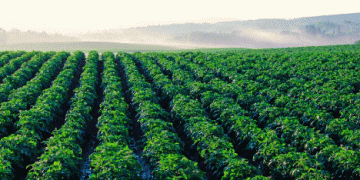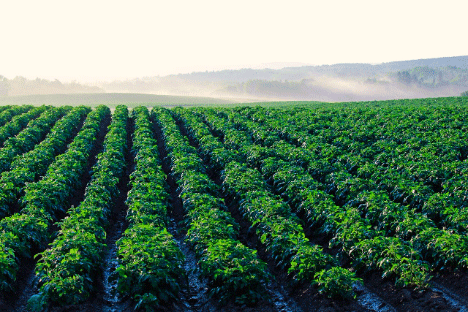The year 2024 marked a pivotal shift in Spain’s agricultural landscape, particularly in potato farming. Nationally, the area dedicated to potato cultivation shrank by 1.9%, leaving Spain with just 60,800 hectares of potato crops, according to the Ministry of Agriculture. However, against this backdrop of decline, one region stood out: Castile and León, which saw a notable increase of 2.1% in its potato planting area, now reaching 17,300 hectares.
Castile and León: Spain’s Potato Powerhouse
Castile and León has long been a key player in Spain’s agricultural sector, particularly for potato production. This growth in 2024 reinforces its status as the country’s leading potato-producing region. While other areas such as Soria and Burgos have seen declines in cultivation, Castile and León continues to thrive, driven by its farmers’ resilience and adaptability.
Several factors have contributed to this regional increase. One is the dedication of local growers who have responded to the challenges of climate change and rising input costs with innovative farming techniques. The region benefits from its climate and soil conditions, which are favorable for potato cultivation, as well as from investments in irrigation infrastructure and technology that help mitigate the impact of increasingly unpredictable weather patterns.
Challenges in Potato Farming: Climate and Costs
Despite the growth in Castile and León, the region—and Spain as a whole—faces significant challenges. Climate variability, with hotter summers and less predictable rainfall, poses a direct threat to potato yields. In addition, rising costs of inputs, particularly fertilizers and energy, have put pressure on profitability for many farmers.
To manage these challenges, farmers in Castile and León have increasingly turned to more sustainable practices, such as precision agriculture and the use of drought-resistant potato varieties. These measures help optimize water usage and reduce the environmental footprint of potato farming.
Addressing Declining Potato Consumption
While production may be holding steady or increasing in regions like Castile and León, the demand for potatoes in Spain is facing a downturn. Household consumption of potatoes decreased by 1.6% in 2024, reflecting changing consumer preferences and competition from other carbohydrate sources.
To counteract this decline, the Interprofessional Potato Association of Castile and León has launched several initiatives to promote potato consumption. One notable effort is a series of tasting events held at local fairs, where consumers can experience the quality and flavor of locally grown potatoes. These events are part of a broader campaign to educate consumers about the nutritional benefits and versatility of potatoes in the kitchen.
The Future of Potato Farming in Spain
Looking ahead, the Spanish potato industry will need to adapt to both market and environmental shifts. While regions like Castile and León demonstrate that growth is possible even in challenging times, other regions may need to adopt similar strategies to ensure their survival. Furthermore, as consumer habits evolve, ongoing promotion and innovation will be key to maintaining the potato’s place on the dinner table.
Castile and León’s 2.1% increase in potato cultivation stands as a testament to the resilience of its agricultural sector, even as the rest of Spain faces a decline. The region’s ability to adapt to climate challenges and rising costs, combined with efforts to boost domestic consumption, sets a strong example for other regions. However, the future of potato farming in Spain will depend on continued innovation, sustainability, and effective consumer engagement.
































